Changing a bike tire might not seem like an especially important life skill, but if you ride a bike in any capacity, it’s a skill you should learn. No one ever plans on having their ride interrupted with a flat tire, but flat tires are one of those annoyances that every rider has the displeasure of experiencing at one point or another. By thinking ahead and taking some time to learn how to change a flat, the hassle of having to change a tire remains just that: an annoying interruption, but not the end of your ride.
If you want to successfully change your bike tire, then before even learning the “how” of it, you first need to know and collect the “what.”
In other words, you need to be prepared, which means having a fix-a-flat kit that you take with you on each ride. At the very least, you should include the basic materials required to effectively fix your flat; what you’ll need will depend on whether you’re riding tubeless or tubed.
Putting together a fix-a-flat kit might seem like an afterthought, but having one on hand might be the difference between a minor disruption to a ride and a major aggravation. If you end up with a flat, remember - always find a safe place, away from traffic and other possible dangers, before working on your bike.
The first step in changing a flat tire might seem obvious, but here it goes: remove the wheel.
If your tires are tubeless and you have a tubeless repair kit, then you might be able to skip this step. If the damage to the tire is a simple puncture, you can just plug it without taking the wheel off. However, if you find that the damage to the tire is extensive enough to where plugging it won’t resolve the issue, then the wheel will need to be removed. To remove the wheel from your bike, start by flipping it upside down.
Pro tip: You might find it easier to work on your bike when it’s upside-down. When flipping your bike, remove the computer from the handlebars to avoid scratching it.
Removing the rear wheel might seem intimidating at first, particularly when you realize that the chain and derailleur are located in the rear. However, the process of removing the back wheel isn’t much more difficult than removing the front, especially if you take your time. To begin, first shift the bike into the smallest sprocket, creating slack in the chain for easier wheel removal and installation. Raise the bike by the saddle and while pedaling with your hand, use the right shift lever to shift gears. Repeat this, using the left shift lever, so that the chain ends up on the smallest chainring in the front as well.
However, the process of removing the back wheel isn’t much more difficult than removing the front, especially if you take your time. To begin, first shift the bike into the smallest sprocket, creating slack in the chain for easier wheel removal and installation. Raise the bike by the saddle and while pedaling with your hand, use the right shift lever to shift gears. Repeat this, using the left shift lever, so that the chain ends up on the smallest chainring in the front as well.
While typical wheel removal requires that you open the brake if you’re addressing a flat tire, then it’s likely that the tire has already lost enough air so that it slides out easily. If your bike is equipped with disc brakes, then you’re in luck because the wheels can be removed without touching the brakes. Quick releases that hold the wheel in place are especially common. To loosen the wheel via quick release, pull - do not twist - the lever out and away from the frame until it is completely open. You should be able to remove the wheel with ease by carefully lifting the bike by its saddle and letting the wheel fall out.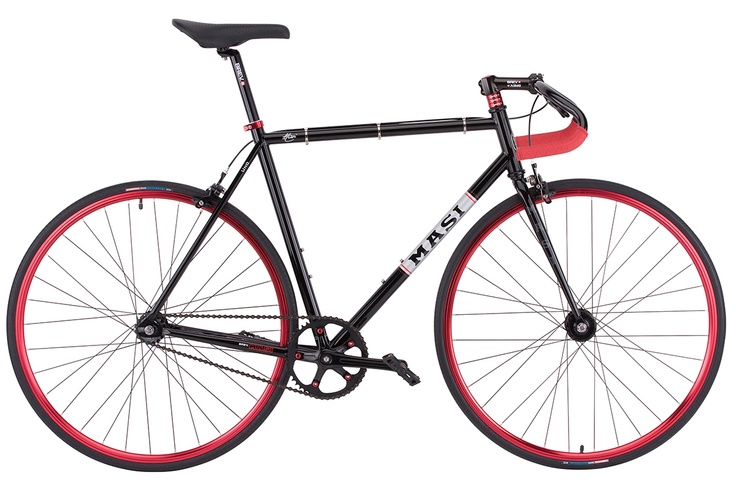 If it doesn’t fall on its own, hitting it with the palm of your hand gently should be enough to make it drop. If it still doesn’t come out, then check to make sure the chain and derailleur aren’t stopping it. If they are, lift your bike by its saddle and, while holding it up, reach around with your other hand to pull back the derailleur and consequently, the chain. Some derailleurs are equipped with a clutch, requiring that you release the clutch and then remove the axle. Push the derailleur cage towards the crank and let the wheel drop. At no point should you find yourself trying to force anything to move.
If it doesn’t fall on its own, hitting it with the palm of your hand gently should be enough to make it drop. If it still doesn’t come out, then check to make sure the chain and derailleur aren’t stopping it. If they are, lift your bike by its saddle and, while holding it up, reach around with your other hand to pull back the derailleur and consequently, the chain. Some derailleurs are equipped with a clutch, requiring that you release the clutch and then remove the axle. Push the derailleur cage towards the crank and let the wheel drop. At no point should you find yourself trying to force anything to move.
Once the wheel has been removed, it’s time to address the tire itself.
Standard tires are designed with an inner tube, which is inflated with air. While relatively inexpensive to replace, making them a popular option, tubes can be punctured or pinched flat relatively easily. Tubeless tires don’t have an inner tube and are instead equipped with an airtight rim that the tire snuggly rests in.
If you’re running tube, then you’ll need to remove it; if you’re running tubeless, you’ll need to patch it with a tire plug. Tire plug kits are sold at most reputable bike shops and consist of a strips of rubber and an insertion device, requiring no other equipment or changing out hardware. Most tubed tires can be converted to tubeless.
To remove the tire, you’ll need to use your tire levers. To do so, insert the flat end of the lever under the bead. Place a second lever under the bead and move along the rim until the tire is off. In most situations, you can reinstall the replacement or a patched tube without completely removing the tire. By breaking the bead on just one side, you will save a lot of time and greatly simplify the process.
While many would recommend you run your finger along the tire to search for the culprit of your flat, doing so could also result in you having to do some patchwork on your finger, too. If whatever punctured your tire is still there and it’s capable of piercing a bike tire, then your finger stands no chance against it. Before doing a hands-on analysis of the problem, visually inspect the tire, both inside and out, first. It might take longer, but you’ll be able to avoid a finger cut and maybe even a tetanus shot. You can also pack cotton pads or use something else to create a barrier between your finger and the sharp object that it might encounter, but there’s still a risk of injury . Tire levers are used for the removal of tires, but you can also run one along the tire for inspection purposes if you prefer playing it safe.
Before doing a hands-on analysis of the problem, visually inspect the tire, both inside and out, first. It might take longer, but you’ll be able to avoid a finger cut and maybe even a tetanus shot. You can also pack cotton pads or use something else to create a barrier between your finger and the sharp object that it might encounter, but there’s still a risk of injury . Tire levers are used for the removal of tires, but you can also run one along the tire for inspection purposes if you prefer playing it safe.
If both the visual and tactile inspections fail, reinflate the tire to see if you can hear the air leaking out of the puncture point. If you find only one puncture hole, then you’re most likely looking at road debris as being the culprit. Depending on the location and manner in which your tire has been punctured, a pointed tool, such as a screwdriver, can be used to push out the object in question before it works itself inward and creates additional punctures. If you see two holes next to each other, then it’s likely that you’re dealing with a pinch-flat, which means your flat wasn’t caused by road or trail debris; it was caused when the tube got itself pinched between the tire and rim.
Patching tubes is an excellent option for anyone who prefers pinching a few pennies, going green by reusing, or being resourceful when there are no more spares. Patch kits are available exactly for this purpose and come with everything you need need in order to get the job done. Patch kits also happen to be very compact so they are a perfect backup, even if you prefer to replace the tube outright.
If patching is your thing, then you’ll want to start by cleaning the affected area and then roughing the surface with an emery cloth or sandpaper. Kits come with two kinds of patches: glueless and those required glue. If your kit has glueless patches, then it’s basically like putting on a bandaid: peel off the backing, place it over the hole, and press with firm pressure. If your patches require glue, then simply add a thin layer of glue to both the tube and the patch. Once the glue has reached a tacky consistency, place the patch and press firmly until you’re sure it’s solidly in place.
There are some flats that are simply too severe to patch. In those circumstances, you’ll need to skip this step and simply install a new tube.
To install your tube, you’ll start by using your pump to inflate it just enough so that it obtains its form, making it easier for installation and reducing your chances of suffering a pinch-flat. Starting with the valve stem, put the tube on the rim and insert the stem straight through the valve hole. Carefully work the tire back onto the rim by rolling the bead away from yourself using your hands, not a lever; levers increase the likelihood of accidentally puncturing the replacement tube. Upon reaching the valve stem, wrap sides of the tire bead low into the rim and push up on the stem to get the tube into the tire.
Pro tip: if you align the branding on the tire with the stem, you’ll be able to locate the stem much quicker next time.
To avoid having to deal with another flat, it’s important that you take extra care to ensure that the tire bead isn’t pinching the tube.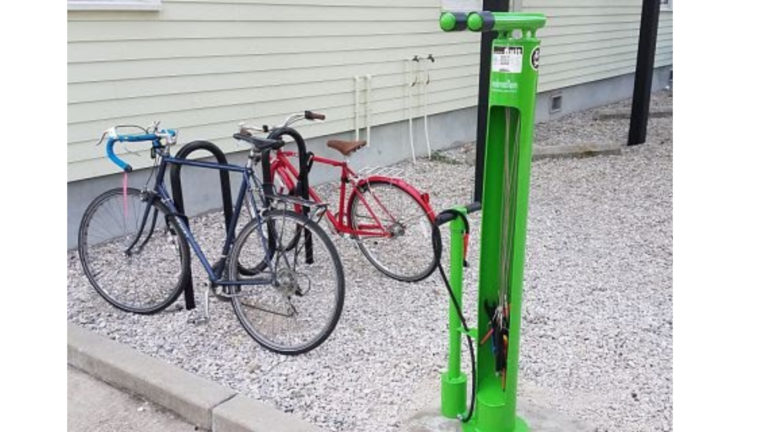 Do this by grabbing the tire with both hands and "massaging" and twisting it side-to-side as you work around the rim. This will ensure that the tube is positioned correctly inside the tire, away from the bead that can pinch it.
Do this by grabbing the tire with both hands and "massaging" and twisting it side-to-side as you work around the rim. This will ensure that the tube is positioned correctly inside the tire, away from the bead that can pinch it.
Now is when you find out whether or not your efforts paid off; it’s time to inflate your tire. To do this, you can use either a CO2 cartridge, a minipump, or both. Each method of inflation has its pros and cons, so ultimately, choose what’s most comfortable for you. If possible, equip yourself with both.
CO2 cartridges are highly effective, especially when your goal is to inflate to higher pressures, but they are a one shot deal, so there’s no reusing them. It’s a good idea to practice tire inflation at home using a CO2 cartridge to ensure that when the inevitable occurs, you don’t blow out your tube or waste the cartridge, and get left stranded. The key to using a CO2 cartridge is to ensure that the inflator is properly connected to the valve stem.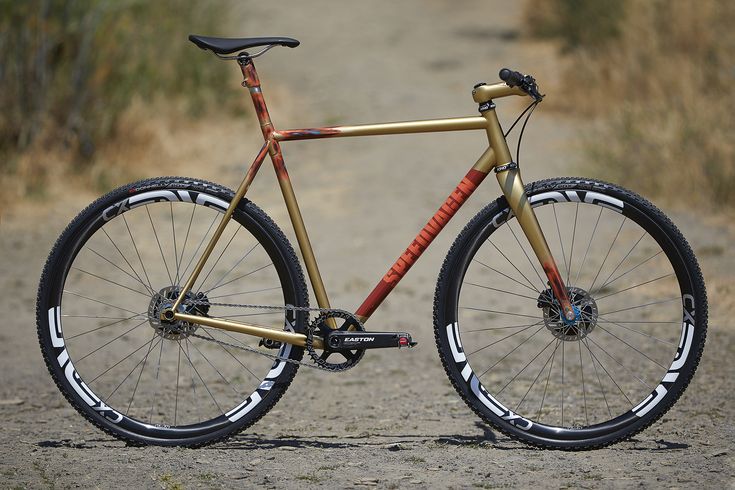
Having a minipump in your arsenal is highly recommended so that you always have a backup method for tire inflation, even if it’s not as easy to use as CO2 cartridge. Having a pump with a hose is also strongly suggested because it allows you to push the pump against the ground for better leverage, allowing you to accomplish higher pressures; pumps that attach directly to the valve stem don’t offer this advantage and might cause damage to the valve stem or even the rim when used improperly. Combination mini pump/CO2 inflators are also available.
As you’re inflating to your desired PSI, double and triple check the bead so that you’re sure it’s sitting in the rim correctly. Only after you’re certain that everything is in its proper place should you reattach your wheel.
Last but not least, it’s time to install the wheel. The processes of replacing the front and back wheels vary a bit, but neither is especially harder than the other, as long as you know how to effectively get the job done.
To attach the front wheel, first line up the fork dropouts with the axle of the wheel and gently lower the fork onto the axle. Carefully push down on the handlebar to check for the proper placement of the axle in the dropouts. It’s important to be mindful that the quick release or thru-axle lever is on the opposite side of the drivetrain and not touching the frame. Hold the quick release lever in place as you tighten the bolt. If you find that the lever closes too easily or ends up making contact with the frame, just open the lever and tighten the bolt a bit more. Be careful that you don’t over tighten the bolt, as it should be tightened just enough to allow you to use firm pressure when closing the quick lever. If your bike is equipped with rim brakes, don’t forget to reconnect, adjust, and check them for functionality.
If your flat occurred on the rear wheel, then lay the top of the chain around the smallest cog on the cassette and make sure the frame dropouts line up with the axle.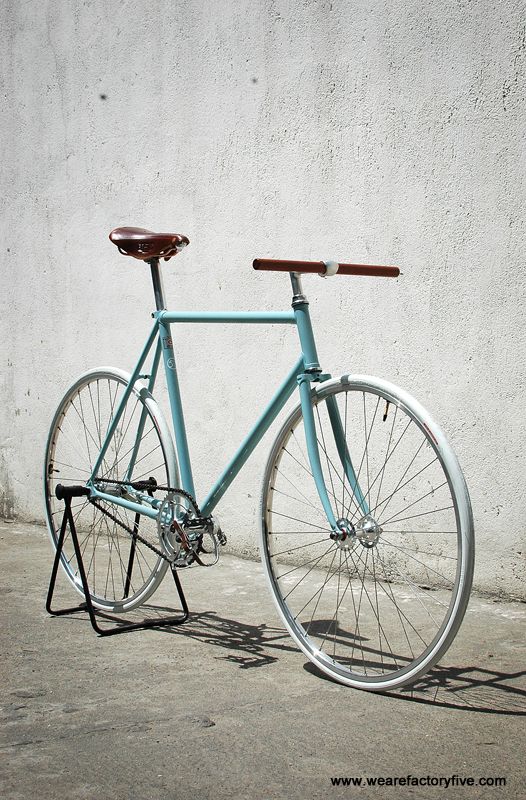 As you gently push the wheel back into the frame, take care to also pull the derailleur down and back so that it doesn’t get in the way. In the event that the wheel doesn’t go in easily, remove it and try again. If you’re sure that the wheel properly placed, then it’s time to close the quick release (and rim brakes if applicable) or insert the thru-axle into the frame and hub and thread it shut. The final test in determining whether your bike is ready to continue its journey is by lifting the rear wheel and spinning the cranks. If it runs smoothly, then you know you’re good to go.
As you gently push the wheel back into the frame, take care to also pull the derailleur down and back so that it doesn’t get in the way. In the event that the wheel doesn’t go in easily, remove it and try again. If you’re sure that the wheel properly placed, then it’s time to close the quick release (and rim brakes if applicable) or insert the thru-axle into the frame and hub and thread it shut. The final test in determining whether your bike is ready to continue its journey is by lifting the rear wheel and spinning the cranks. If it runs smoothly, then you know you’re good to go.
Flat tires are already unplanned and unexpected; planning ahead by prepping a fix-a-flat kit and learning how to change your tire can ease your mind for such unfortunate circumstances, but what do you do when even fixing your flat doesn’t go as planned? Read on for some quick, easy solutions when even flat tires don’t go your way.
Small, unfixable punctures. Super glue is already a life-saver in so many situations, so why should cycling prove to be any different? Super glue is a great quick fix for smaller punctures that might not be fixable otherwise, albeit temporary.
Super glue is already a life-saver in so many situations, so why should cycling prove to be any different? Super glue is a great quick fix for smaller punctures that might not be fixable otherwise, albeit temporary.
Large, unfixable punctures. If you find that you end up with a hole that’s simply too big to repair, then it’s time to resort to some out-of-the-box thinking. Cut out the damaged innertube section and tie the two ends together. It’ll be obvious to you that it’s not a perfect solution, but you should at least be able to reach about 50 psi, which is certainly enough until you can better resolve your tire situation.
Unfixable tire and sidewall gashes. In the event that your tire or the sidewall of your tire ends up sliced or gashed beyond standard repair, don’t despair; make a boot instead. Using a dollar bill, old gel wrapper, or piece of duct tape to cover the hole from the inside is a quick, easy way to resolve your emergency until you get home. It might not be ideal, but it should suffice until a more permanent resolution can be made.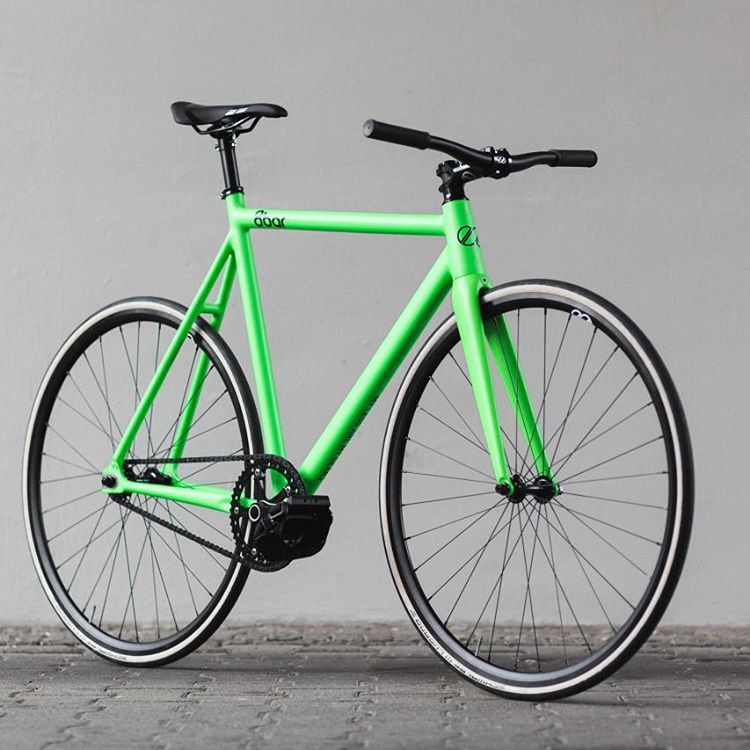
Learning the skill of bike tire repair can be thought of as a form of insurance: you might not want it and you might never use it, but if ever find yourself in a situation where you need it, you’ll be glad it’s there. The folks at Velosurance are all cyclists and understand that it’s only a matter of time before an unfortunate circumstance arises. From gap medical to liability, vehicle contact protection to even roadside assistance - for when you’ve got a flat and are fresh out of options - Velosurance offers a highly customizable policy to provide coverage for nearly any cycling associate risk. Whatever your needs, chances are, there’s a policy for you.
Changing a bike tire might not seem like an especially important life skill, but if you ride a bike in any capacity, it’s a skill you should learn. No one ever plans on having their ride interrupted with a flat tire, but flat tires are one of those annoyances that every rider has the displeasure of experiencing at one point or another.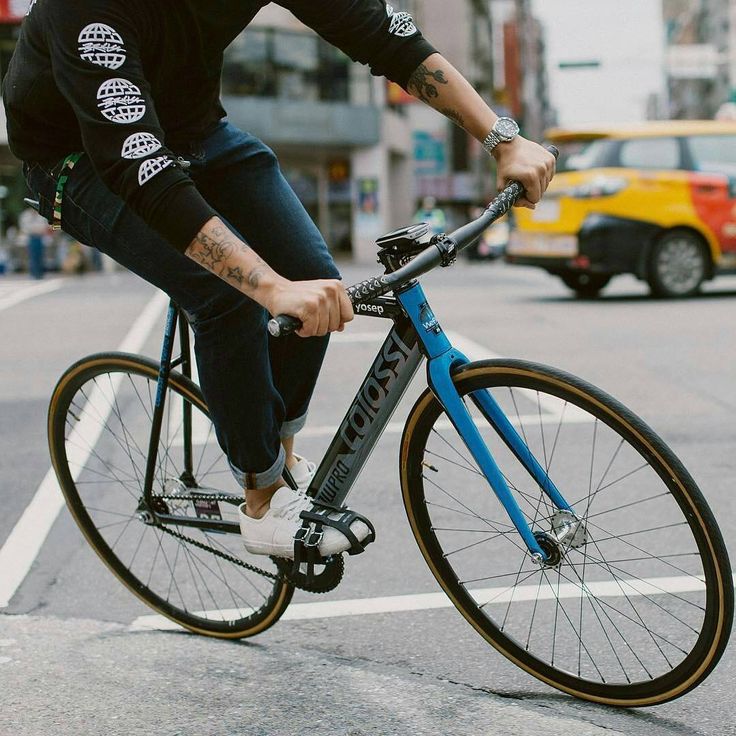 By thinking ahead and taking some time to learn how to change a flat, the hassle of having to change a tire remains just that: an annoying interruption, but not the end of your ride.
By thinking ahead and taking some time to learn how to change a flat, the hassle of having to change a tire remains just that: an annoying interruption, but not the end of your ride.
If you want to successfully change your bike tire, then before even learning the “how” of it, you first need to know and collect the “what.”
In other words, you need to be prepared, which means having a fix-a-flat kit that you take with you on each ride. At the very least, you should include the basic materials required to effectively fix your flat; what you’ll need will depend on whether you’re riding tubeless or tubed.
Putting together a fix-a-flat kit might seem like an afterthought, but having one on hand might be the difference between a minor disruption to a ride and a major aggravation.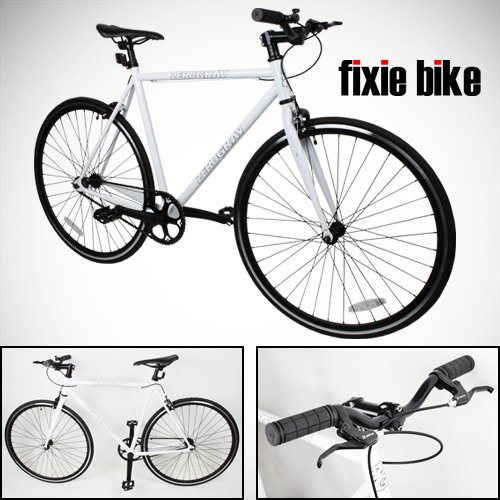 If you end up with a flat, remember - always find a safe place, away from traffic and other possible dangers, before working on your bike.
If you end up with a flat, remember - always find a safe place, away from traffic and other possible dangers, before working on your bike.
The first step in changing a flat tire might seem obvious, but here it goes: remove the wheel.
If your tires are tubeless and you have a tubeless repair kit, then you might be able to skip this step. If the damage to the tire is a simple puncture, you can just plug it without taking the wheel off. However, if you find that the damage to the tire is extensive enough to where plugging it won’t resolve the issue, then the wheel will need to be removed. To remove the wheel from your bike, start by flipping it upside down.
Pro tip: You might find it easier to work on your bike when it’s upside-down. When flipping your bike, remove the computer from the handlebars to avoid scratching it.
Removing the rear wheel might seem intimidating at first, particularly when you realize that the chain and derailleur are located in the rear.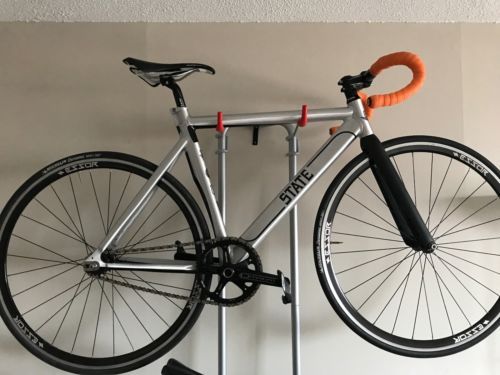 However, the process of removing the back wheel isn’t much more difficult than removing the front, especially if you take your time. To begin, first shift the bike into the smallest sprocket, creating slack in the chain for easier wheel removal and installation. Raise the bike by the saddle and while pedaling with your hand, use the right shift lever to shift gears. Repeat this, using the left shift lever, so that the chain ends up on the smallest chainring in the front as well.
However, the process of removing the back wheel isn’t much more difficult than removing the front, especially if you take your time. To begin, first shift the bike into the smallest sprocket, creating slack in the chain for easier wheel removal and installation. Raise the bike by the saddle and while pedaling with your hand, use the right shift lever to shift gears. Repeat this, using the left shift lever, so that the chain ends up on the smallest chainring in the front as well.
While typical wheel removal requires that you open the brake if you’re addressing a flat tire, then it’s likely that the tire has already lost enough air so that it slides out easily. If your bike is equipped with disc brakes, then you’re in luck because the wheels can be removed without touching the brakes. Quick releases that hold the wheel in place are especially common. To loosen the wheel via quick release, pull - do not twist - the lever out and away from the frame until it is completely open. You should be able to remove the wheel with ease by carefully lifting the bike by its saddle and letting the wheel fall out. If it doesn’t fall on its own, hitting it with the palm of your hand gently should be enough to make it drop. If it still doesn’t come out, then check to make sure the chain and derailleur aren’t stopping it. If they are, lift your bike by its saddle and, while holding it up, reach around with your other hand to pull back the derailleur and consequently, the chain. Some derailleurs are equipped with a clutch, requiring that you release the clutch and then remove the axle. Push the derailleur cage towards the crank and let the wheel drop. At no point should you find yourself trying to force anything to move.
If it doesn’t fall on its own, hitting it with the palm of your hand gently should be enough to make it drop. If it still doesn’t come out, then check to make sure the chain and derailleur aren’t stopping it. If they are, lift your bike by its saddle and, while holding it up, reach around with your other hand to pull back the derailleur and consequently, the chain. Some derailleurs are equipped with a clutch, requiring that you release the clutch and then remove the axle. Push the derailleur cage towards the crank and let the wheel drop. At no point should you find yourself trying to force anything to move.
Once the wheel has been removed, it’s time to address the tire itself.
Standard tires are designed with an inner tube, which is inflated with air. While relatively inexpensive to replace, making them a popular option, tubes can be punctured or pinched flat relatively easily. Tubeless tires don’t have an inner tube and are instead equipped with an airtight rim that the tire snuggly rests in.![]()
If you’re running tube, then you’ll need to remove it; if you’re running tubeless, you’ll need to patch it with a tire plug. Tire plug kits are sold at most reputable bike shops and consist of a strips of rubber and an insertion device, requiring no other equipment or changing out hardware. Most tubed tires can be converted to tubeless.
To remove the tire, you’ll need to use your tire levers. To do so, insert the flat end of the lever under the bead. Place a second lever under the bead and move along the rim until the tire is off. In most situations, you can reinstall the replacement or a patched tube without completely removing the tire. By breaking the bead on just one side, you will save a lot of time and greatly simplify the process.
While many would recommend you run your finger along the tire to search for the culprit of your flat, doing so could also result in you having to do some patchwork on your finger, too. If whatever punctured your tire is still there and it’s capable of piercing a bike tire, then your finger stands no chance against it.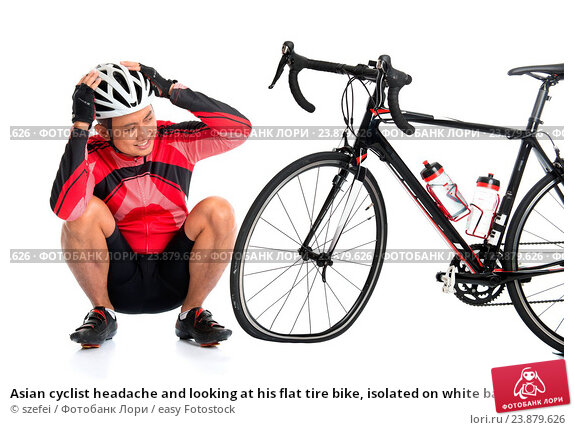 Before doing a hands-on analysis of the problem, visually inspect the tire, both inside and out, first. It might take longer, but you’ll be able to avoid a finger cut and maybe even a tetanus shot. You can also pack cotton pads or use something else to create a barrier between your finger and the sharp object that it might encounter, but there’s still a risk of injury . Tire levers are used for the removal of tires, but you can also run one along the tire for inspection purposes if you prefer playing it safe.
Before doing a hands-on analysis of the problem, visually inspect the tire, both inside and out, first. It might take longer, but you’ll be able to avoid a finger cut and maybe even a tetanus shot. You can also pack cotton pads or use something else to create a barrier between your finger and the sharp object that it might encounter, but there’s still a risk of injury . Tire levers are used for the removal of tires, but you can also run one along the tire for inspection purposes if you prefer playing it safe.
If both the visual and tactile inspections fail, reinflate the tire to see if you can hear the air leaking out of the puncture point. If you find only one puncture hole, then you’re most likely looking at road debris as being the culprit. Depending on the location and manner in which your tire has been punctured, a pointed tool, such as a screwdriver, can be used to push out the object in question before it works itself inward and creates additional punctures. If you see two holes next to each other, then it’s likely that you’re dealing with a pinch-flat, which means your flat wasn’t caused by road or trail debris; it was caused when the tube got itself pinched between the tire and rim.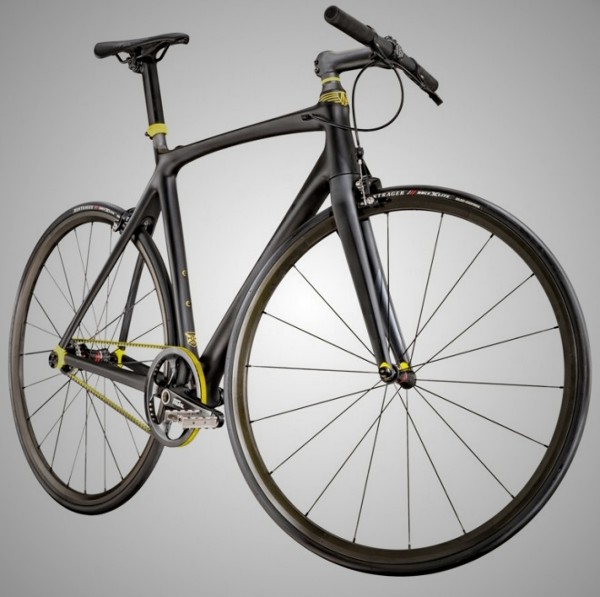
Patching tubes is an excellent option for anyone who prefers pinching a few pennies, going green by reusing, or being resourceful when there are no more spares. Patch kits are available exactly for this purpose and come with everything you need need in order to get the job done. Patch kits also happen to be very compact so they are a perfect backup, even if you prefer to replace the tube outright.
If patching is your thing, then you’ll want to start by cleaning the affected area and then roughing the surface with an emery cloth or sandpaper. Kits come with two kinds of patches: glueless and those required glue. If your kit has glueless patches, then it’s basically like putting on a bandaid: peel off the backing, place it over the hole, and press with firm pressure. If your patches require glue, then simply add a thin layer of glue to both the tube and the patch. Once the glue has reached a tacky consistency, place the patch and press firmly until you’re sure it’s solidly in place.
There are some flats that are simply too severe to patch. In those circumstances, you’ll need to skip this step and simply install a new tube.
To install your tube, you’ll start by using your pump to inflate it just enough so that it obtains its form, making it easier for installation and reducing your chances of suffering a pinch-flat. Starting with the valve stem, put the tube on the rim and insert the stem straight through the valve hole. Carefully work the tire back onto the rim by rolling the bead away from yourself using your hands, not a lever; levers increase the likelihood of accidentally puncturing the replacement tube. Upon reaching the valve stem, wrap sides of the tire bead low into the rim and push up on the stem to get the tube into the tire.
Pro tip: if you align the branding on the tire with the stem, you’ll be able to locate the stem much quicker next time.
To avoid having to deal with another flat, it’s important that you take extra care to ensure that the tire bead isn’t pinching the tube. Do this by grabbing the tire with both hands and "massaging" and twisting it side-to-side as you work around the rim. This will ensure that the tube is positioned correctly inside the tire, away from the bead that can pinch it.
Do this by grabbing the tire with both hands and "massaging" and twisting it side-to-side as you work around the rim. This will ensure that the tube is positioned correctly inside the tire, away from the bead that can pinch it.
Now is when you find out whether or not your efforts paid off; it’s time to inflate your tire. To do this, you can use either a CO2 cartridge, a minipump, or both. Each method of inflation has its pros and cons, so ultimately, choose what’s most comfortable for you. If possible, equip yourself with both.
CO2 cartridges are highly effective, especially when your goal is to inflate to higher pressures, but they are a one shot deal, so there’s no reusing them. It’s a good idea to practice tire inflation at home using a CO2 cartridge to ensure that when the inevitable occurs, you don’t blow out your tube or waste the cartridge, and get left stranded. The key to using a CO2 cartridge is to ensure that the inflator is properly connected to the valve stem.
Having a minipump in your arsenal is highly recommended so that you always have a backup method for tire inflation, even if it’s not as easy to use as CO2 cartridge. Having a pump with a hose is also strongly suggested because it allows you to push the pump against the ground for better leverage, allowing you to accomplish higher pressures; pumps that attach directly to the valve stem don’t offer this advantage and might cause damage to the valve stem or even the rim when used improperly. Combination mini pump/CO2 inflators are also available.
As you’re inflating to your desired PSI, double and triple check the bead so that you’re sure it’s sitting in the rim correctly. Only after you’re certain that everything is in its proper place should you reattach your wheel.
Last but not least, it’s time to install the wheel. The processes of replacing the front and back wheels vary a bit, but neither is especially harder than the other, as long as you know how to effectively get the job done.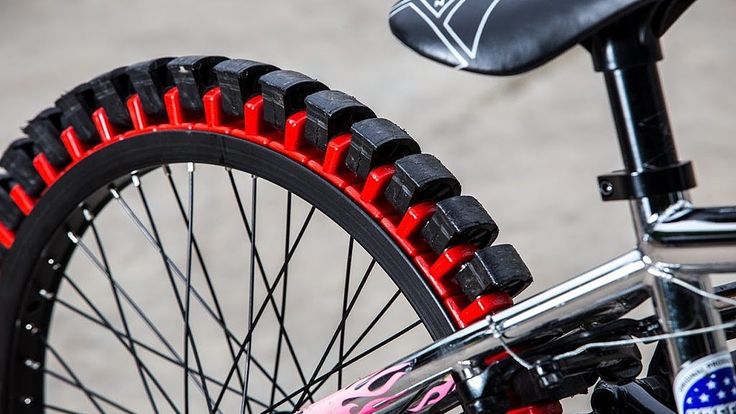
To attach the front wheel, first line up the fork dropouts with the axle of the wheel and gently lower the fork onto the axle. Carefully push down on the handlebar to check for the proper placement of the axle in the dropouts. It’s important to be mindful that the quick release or thru-axle lever is on the opposite side of the drivetrain and not touching the frame. Hold the quick release lever in place as you tighten the bolt. If you find that the lever closes too easily or ends up making contact with the frame, just open the lever and tighten the bolt a bit more. Be careful that you don’t over tighten the bolt, as it should be tightened just enough to allow you to use firm pressure when closing the quick lever. If your bike is equipped with rim brakes, don’t forget to reconnect, adjust, and check them for functionality.
If your flat occurred on the rear wheel, then lay the top of the chain around the smallest cog on the cassette and make sure the frame dropouts line up with the axle.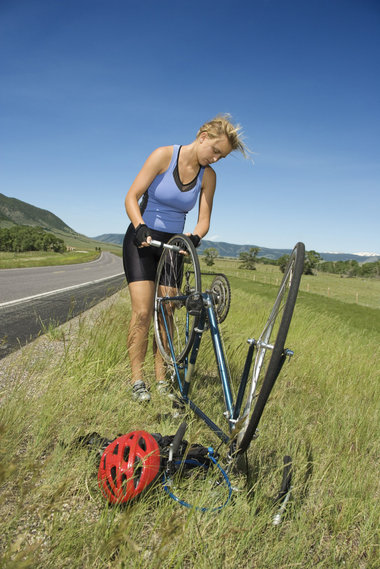 As you gently push the wheel back into the frame, take care to also pull the derailleur down and back so that it doesn’t get in the way. In the event that the wheel doesn’t go in easily, remove it and try again. If you’re sure that the wheel properly placed, then it’s time to close the quick release (and rim brakes if applicable) or insert the thru-axle into the frame and hub and thread it shut. The final test in determining whether your bike is ready to continue its journey is by lifting the rear wheel and spinning the cranks. If it runs smoothly, then you know you’re good to go.
As you gently push the wheel back into the frame, take care to also pull the derailleur down and back so that it doesn’t get in the way. In the event that the wheel doesn’t go in easily, remove it and try again. If you’re sure that the wheel properly placed, then it’s time to close the quick release (and rim brakes if applicable) or insert the thru-axle into the frame and hub and thread it shut. The final test in determining whether your bike is ready to continue its journey is by lifting the rear wheel and spinning the cranks. If it runs smoothly, then you know you’re good to go.
Flat tires are already unplanned and unexpected; planning ahead by prepping a fix-a-flat kit and learning how to change your tire can ease your mind for such unfortunate circumstances, but what do you do when even fixing your flat doesn’t go as planned? Read on for some quick, easy solutions when even flat tires don’t go your way.
Small, unfixable punctures.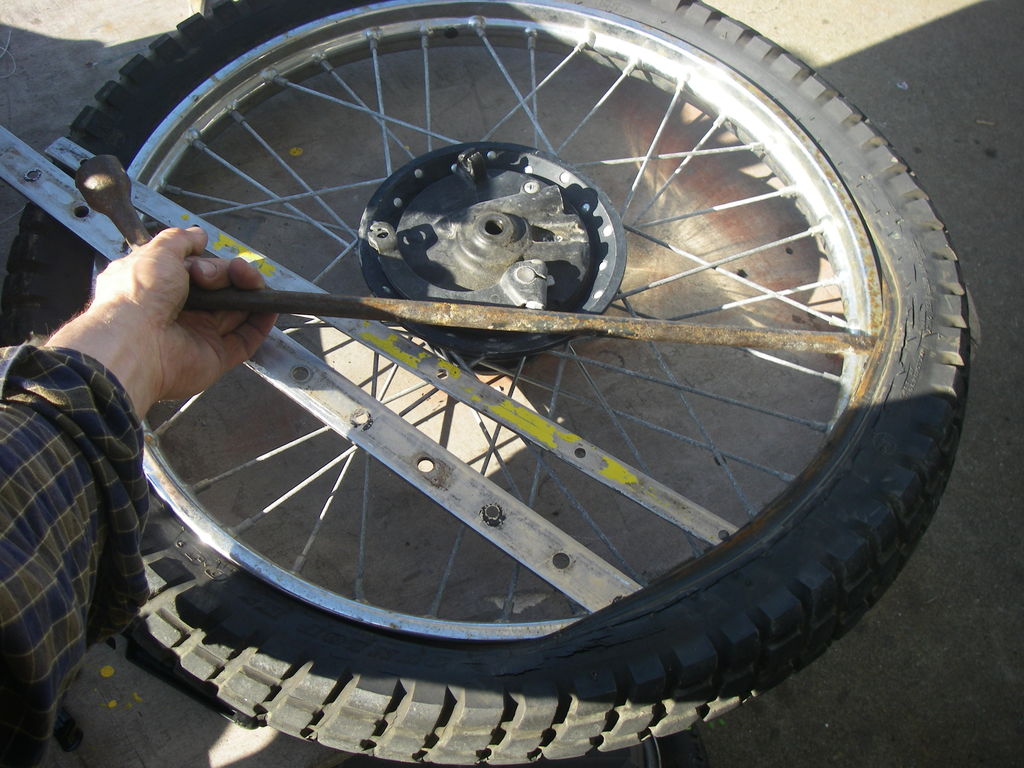 Super glue is already a life-saver in so many situations, so why should cycling prove to be any different? Super glue is a great quick fix for smaller punctures that might not be fixable otherwise, albeit temporary.
Super glue is already a life-saver in so many situations, so why should cycling prove to be any different? Super glue is a great quick fix for smaller punctures that might not be fixable otherwise, albeit temporary.
Large, unfixable punctures. If you find that you end up with a hole that’s simply too big to repair, then it’s time to resort to some out-of-the-box thinking. Cut out the damaged innertube section and tie the two ends together. It’ll be obvious to you that it’s not a perfect solution, but you should at least be able to reach about 50 psi, which is certainly enough until you can better resolve your tire situation.
Unfixable tire and sidewall gashes. In the event that your tire or the sidewall of your tire ends up sliced or gashed beyond standard repair, don’t despair; make a boot instead. Using a dollar bill, old gel wrapper, or piece of duct tape to cover the hole from the inside is a quick, easy way to resolve your emergency until you get home. It might not be ideal, but it should suffice until a more permanent resolution can be made.
Learning the skill of bike tire repair can be thought of as a form of insurance: you might not want it and you might never use it, but if ever find yourself in a situation where you need it, you’ll be glad it’s there. The folks at Velosurance are all cyclists and understand that it’s only a matter of time before an unfortunate circumstance arises. From gap medical to liability, vehicle contact protection to even roadside assistance - for when you’ve got a flat and are fresh out of options - Velosurance offers a highly customizable policy to provide coverage for nearly any cycling associate risk. Whatever your needs, chances are, there’s a policy for you.
In this block, read about technical problems: how to fix and prevent the most common types of problems if something happened right on the go, and far from the workshop.
It would be nice to take a small repair kit with you.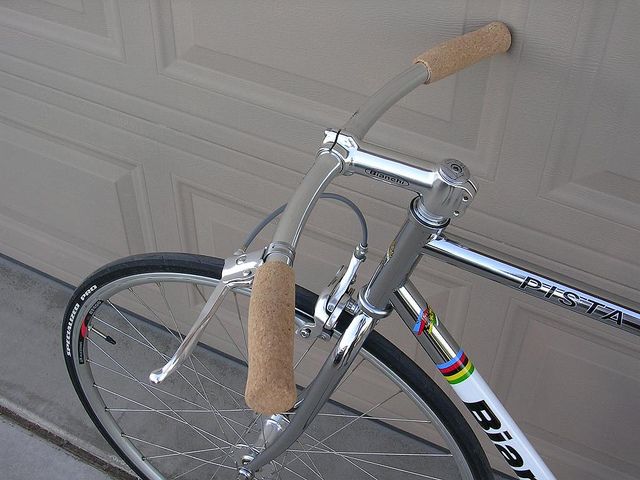 It can be carried in a bag or ... a bottle. The most common flask fits a full repair kit (even a pump!), And it's also easy to carry with you when you step away from the bike. As for bags, there are simply indecently many options: seatpost with reflectors, bags in a frame triangle, on and under the steering wheel, on the trunk! Some of them are so cute that they will look appropriate in the office. And with the development of cycling, bikepacking came into fashion: roomy bags for cycling trips. nine0003
It can be carried in a bag or ... a bottle. The most common flask fits a full repair kit (even a pump!), And it's also easy to carry with you when you step away from the bike. As for bags, there are simply indecently many options: seatpost with reflectors, bags in a frame triangle, on and under the steering wheel, on the trunk! Some of them are so cute that they will look appropriate in the office. And with the development of cycling, bikepacking came into fashion: roomy bags for cycling trips. nine0003
Now about the contents of bags (and flasks): we advise you to take a camera, a pump and a multi-tool. Below we describe what they look like and why they are needed.
Nails and glass are dangerous even for tubeless tires and anti-puncture tires, so a spare tire will not hurt.
Needed to inflate a tire after a replacement or pump up a flat tire. There are several types of pumps: portable, folding, micro and macro. The first is attached under the bottle cage, the second is placed in a shoulder bag, you can even put a micro in your pocket (it is the size of a palm and looks like an inflator), and the maxi is placed under the top tube of a bicycle (this was done in the USSR).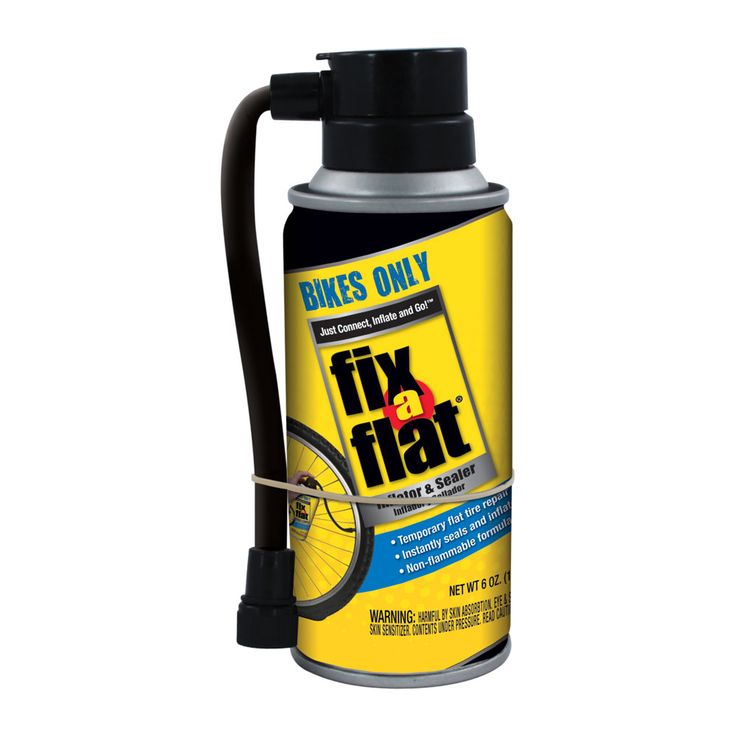 nine0003
nine0003
A set of hexagons and screwdrivers will come in handy if a bolt loosens on a bell, headlight, brakes - anywhere.
Puncture is the most common failure. There are three types of them: a direct injection, a cut, a “snake bite” (when the wheel rim pierces the chamber upon impact). We tell you how to prevent them and what to do if the wheel is punctured.
Watch your blood pressure
"Tire pressure" is measured in atmospheres, here are the standard values: 4 for mountain bikes, 6 for hybrids and 8 for road bikes. If you do not know exactly the model, then look at the tire, they indicate the maximum allowable pressure. It is optimal to reach a value 1–2 atmospheres lower. Check the pump with a pressure gauge. Feel the “perfect pressure” tires and remember how it looks and feels - you will be guided by these impressions when there is no measuring device at hand.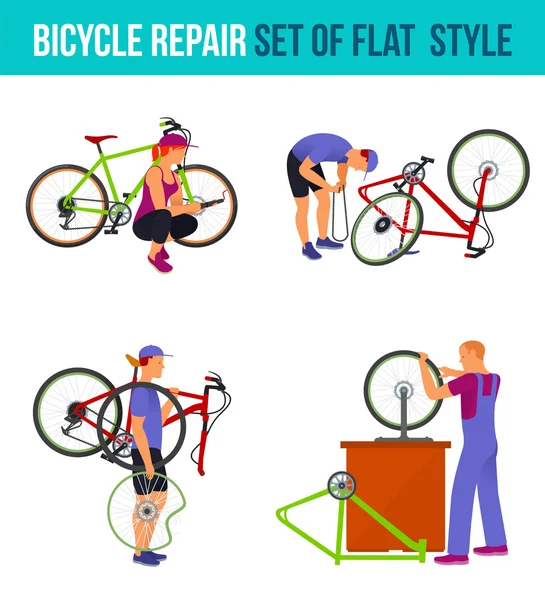 Maintain proper tire pressure: this way the bike develops immunity to “snake bites”, is less prone to pricks and cuts, and generally feels much better. nine0003
Maintain proper tire pressure: this way the bike develops immunity to “snake bites”, is less prone to pricks and cuts, and generally feels much better. nine0003
Use puncture resistant tires
Virtually invincible to punctures and cuts, but low pressure may not withstand snake bites. The disadvantage of such tires is a lot of weight, that is, they ride harder.
Install tires without tubes
It's like on a car. Gives one hundred percent immunity to "snake bites", and if filled with sealant, then also +10 to protection against direct injections. Cons: the cut will have to be repaired with a special tool, and the technology itself is only compatible with new models of wheels and tires. nine0003
Pour sealant into chambers
This is an economical version of the previous point: sealant will seal a small puncture. In both cases, we advise you to fill it in a bicycle workshop.
It takes 10-15 minutes to fix a puncture, pump, spare inner tube and mounts - special plates for tire removal.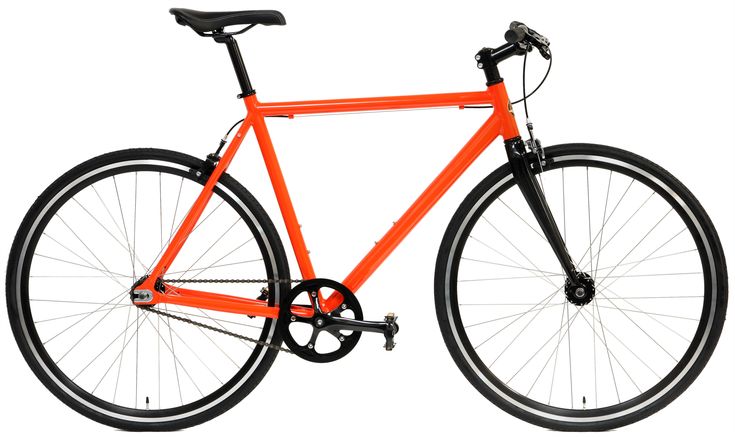 But if you have strong hands, then you can do it without montages. How to apply all these tools to eventually change the camera, we tell in the chat bot: Materials → Minor repairs and maintenance → How to replace the camera
But if you have strong hands, then you can do it without montages. How to apply all these tools to eventually change the camera, we tell in the chat bot: Materials → Minor repairs and maintenance → How to replace the camera
We tell you what to do with the most common cycling problems.
If the gears are not shifting well, then a temporary solution is to lower the shifter two speeds down, and then raise one up. Long-term - go to a bike shop. It also happens that the chain is wedged: it gets stuck between the star and the switch frame. Then you need to stop or try to unscrew it back. In general, transmissions periodically junk, and they need to be reconfigured. This is normal, so don't worry about the bike, just trust the mechanic. nine0003
If the chain has come off, tighten it from below and, pedaling, put it back on the star. This can be done with a hacksaw or by hand.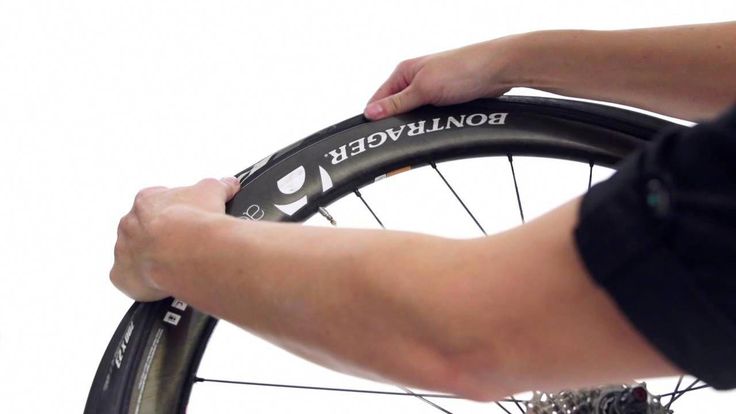 In both cases, it is better to have rubber gloves with you. For high-speed bikes, there is an option to raise the chain without “manual adjustment”: put the front derailleur on a large star and pedal. It happens that the chain itself jumps back.
In both cases, it is better to have rubber gloves with you. For high-speed bikes, there is an option to raise the chain without “manual adjustment”: put the front derailleur on a large star and pedal. It happens that the chain itself jumps back.
When the chain “jumps” over the sprockets, this is wear: it has stretched and the sprockets have worn off. Needs to be replaced in the workshop. nine0003
To avoid these problems, lubricate the chain every 150 km (could be counted as commuting, for example). If you haven’t bought a bike yet and don’t want the hassle of a chain, then pay attention to single-speed models with a planetary hub, belt or cardan drive. Read more about choosing a bike here.
If the creak is in the pedals, then most likely the bottom bracket needs to be changed. She connects the pedals to the stars and creaks from rust and stress. The carriage is often changed, it is a regular consumable. Sometimes the pedals themselves creak, for example after rain.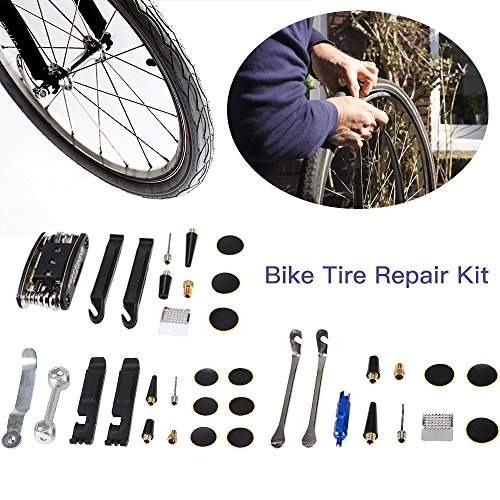 Another reason is the saddle. Maybe the design walks or the fasteners creak. Here, too, it is necessary to change, but already the whole thing. Compared to a carriage, this is a little expensive, and the function of a bicycle (riding) does not interfere in any way. Plus, choosing a cool saddle is not easy. So it makes sense to change only if the creak can hardly endure reluctantly. nine0003
Another reason is the saddle. Maybe the design walks or the fasteners creak. Here, too, it is necessary to change, but already the whole thing. Compared to a carriage, this is a little expensive, and the function of a bicycle (riding) does not interfere in any way. Plus, choosing a cool saddle is not easy. So it makes sense to change only if the creak can hardly endure reluctantly. nine0003
You can drive, but you can't fix it. The wheels have a margin of safety, so you can safely get to the workshop. Just wrap the "fallen warrior" around the adjacent spoke so that nothing interferes with the movement.
In this video, cyclist Vanya Martynov talks about the repair kit and gives tips on bike care and storage. Take a look: Vanya shows tools, teaches how to lubricate the chain and advises what to check when buying a bike.
Everyone needs a little pampering sometimes, and your bike is no exception.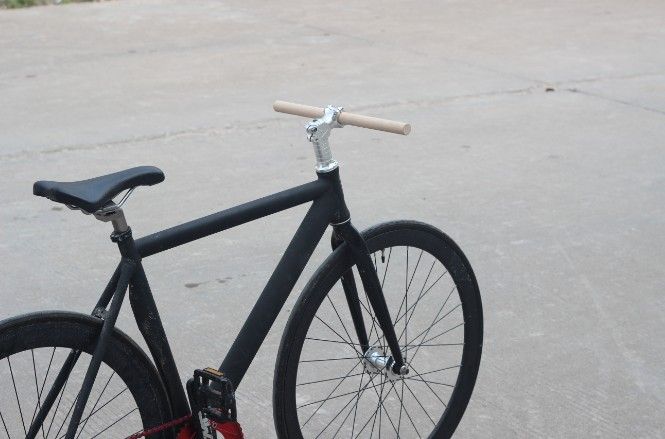 Well, if you are a jack of all trades and can fix it yourself, but if not, then it is better to trust the professionals and take your two-wheeled friend to a bicycle doctor.
Well, if you are a jack of all trades and can fix it yourself, but if not, then it is better to trust the professionals and take your two-wheeled friend to a bicycle doctor.
Today we will tell you about cycling services in Moscow, and you keep your contacts: we are sure they will come in handy!
1. Velomedic is a great service, will come to your home or wherever you ask. Then they will either fix the bike on the spot, or in special cases, take it with them and then bring it back to you. nine0031 Basic MOT: 2940r
Address: Novodmitrovskaya st., 1 Urban space "Khlebozavod No. 9"
Phone: +7 (916) 115-30-85
2. Tobike Club - the guys love old bikes, but they are not limited to them, so they will fix what you bring them. Here you can wash the bike or prepare it for sale.
Simple maintenance: from 1500r
Address: st. Zatsepa, 21с2
Phone: +7 (916) 279-23-23
3. Boom Cycle - bicycle workshop at Patriarch's Ponds.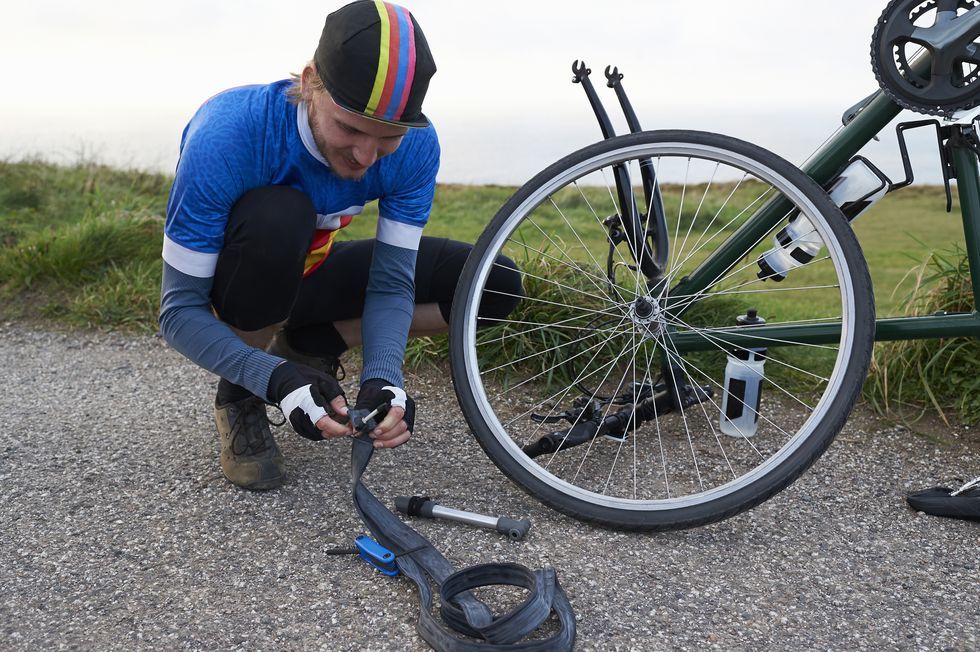 Here they will carry out a full MOT of the bike and help with its setup, and on the site you can calculate the preliminary cost of the repair.
Here they will carry out a full MOT of the bike and help with its setup, and on the site you can calculate the preliminary cost of the repair.
Basic maintenance: from 1500r
Address: Bolshoi Kozikhinsky lane 22/1
Phone: + 7 (495) 182 50 52
4. XVELO - we have a strong friendship with this workshop: with the password itsmybike you will get a 10% discount
The guys fix all the bikes, and the fatbike too. The service is the official warranty workshop of such brands as: BMC, Wilier, Marin, LOOK, Fuji, Intec, Argon18, Format, Forward, Orbea, Kellys, Romet, Alpine bike, Giant, Stevens. nine0031 Express maintenance: 990r
Address: Frunzenskaya embankment, 30 building 2
Phone: +7 (495) 664-97-27, +7 (905) 718-63-42
5. Titan Cycling Club – a historical place! They have been located on Tverskaya since 1986, here you can not only fix your bike, but also rent it, sign up for a bike trip or send your child to the bike trial section.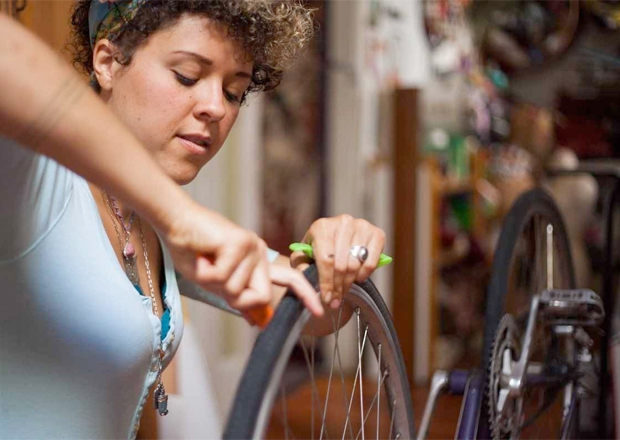
Address: 1st Tverskaya-Yamskaya street, 11, Moscow
Phone: +7 (499) 250-38-37, +7 (499) 251-18-61, +7 (999) 876-15-51
6. Beecycle is a city bike shop on Pokrovsky Boulevard with a relaxed atmosphere and free coffee. You can stop by for maintenance or just chat and stand with the mechanic over your soul: he will not mind. By the way, they will also help with seasonal bike storage if you don’t like to ride in bad weather.
Address: Pokrovsky Boulevard, 16/10s1
Phone: +7 (495) 229 11 76
There is also a second address: Dnepropetrovsk street, 14
Phone: +7 (495) 646 11 32
The service is just as great, but they don't serve coffee there.
7. X-PLACE is a very caring service: if you leave the bike for repair, at the end of the work you will be sent a photo report on the work done and the mechanic’s conclusion on the current state of all parts.
You can bring the bike yourself or order delivery: they will bring it and take it back for 800 rubles
Simple maintenance 1200r.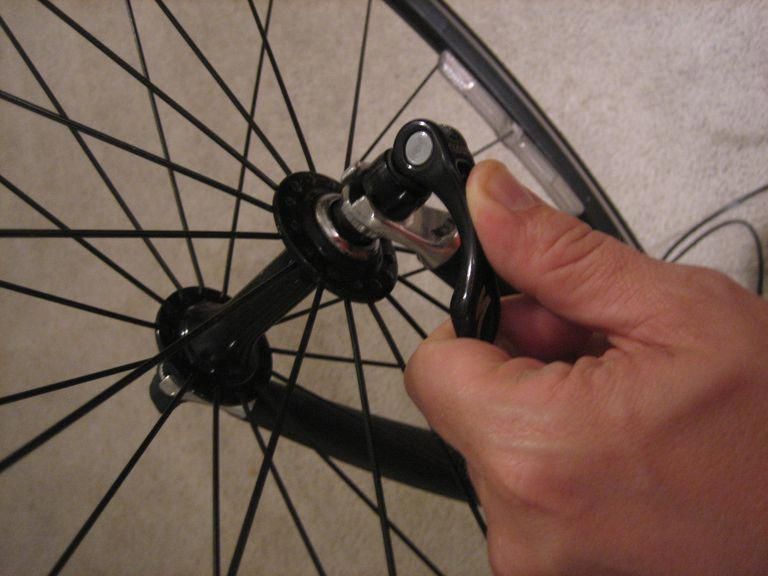
Address: Electrolitny proezd, 10
Phone: +7 (499) 390-07-60
8. VeloLine - experienced mechanics who are responsible for quality: work on each order is carried out strictly by one mechanic who has been trained and approved for this type of work, and the quality is necessarily controlled by the inspector.
TO: from 900 rubles to 3500 rubles
Addresses: Volzhsky boulevard, 1 building 1 (central service), Kashirskoe highway 78 building 6 building 2 (second service)
Phone: +7 (495) 669-57-63
9. VeloMasterskaya.ru is a network of bicycle services in Moscow and the region. 14 years of repair experience, thousands of bikes serviced. They will carry out free diagnostics of all components and components, and will come to pick up your bike anywhere in the city. nine0031 Phone: +7 (495) 123-22-23
First MOT: 1500r
6 branches in Moscow:
Otradnoe: Signalny passage, 16, building 2
Leninsky: Leninsky prospect, 99
Maryino: Bratislavskaya st.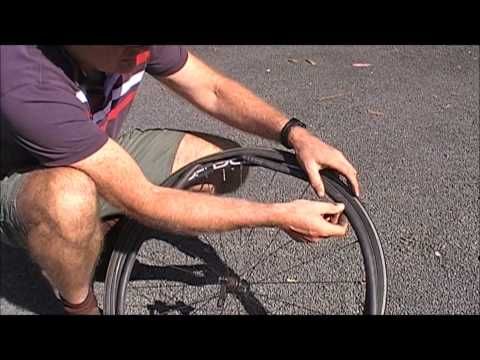 , 22
, 22
Varshavka: Warsaw highway, 18, building 1
Sokol: Volokolamskoe sh., 6
Balashikha: Balashikha, Western communal area, highway Entuziastov, 1A
10. Work Cycle
Speed Guys: Since most parts are in stock, you won't have to leave your two-wheeled friend for long. Leave it in the morning, pick it up in the evening. Or leave in the evening and pick up in the morning. As you wish! nine0031 Seasonal maintenance: 990r
Address: Moscow, m. Aviamotornaya, st. Krasnokazarmennaya, 10
Phone: +7 (495) 142-42-75
11. VeloLab
Scott and Norman official bike shop. If you do not want to go to the service across Moscow, they will pick up your bike for free and return it back to the specified address. They wash, repair, tune, restore - in general, full board for a bicycle.
Basic MOT: 1200r
Address: st. Ugreshskaya 17, building 1, box 36
Phone: +7 (499) 391-84-74+7 (977) 422-95-70
12.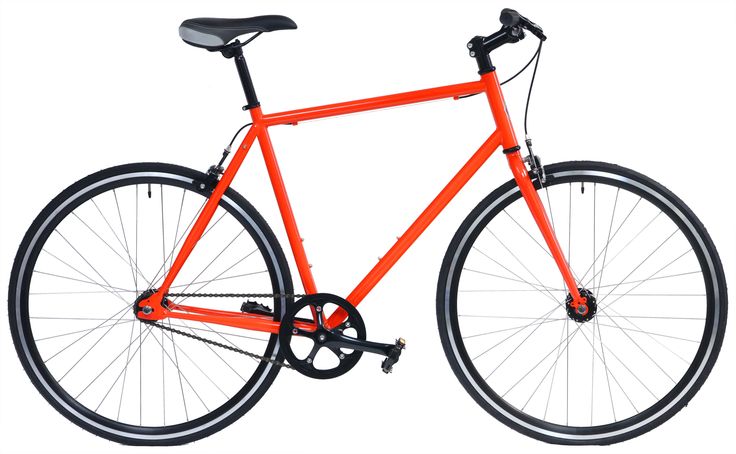 BikeIn - here they will lubricate the chain for free, and they will also take up the repair of the electric bike, if you have one. There are so many orders in the summer that we had to temporarily suspend on-site repairs in order not to keep you waiting, so the service works only in the mode of receiving and issuing orders.
BikeIn - here they will lubricate the chain for free, and they will also take up the repair of the electric bike, if you have one. There are so many orders in the summer that we had to temporarily suspend on-site repairs in order not to keep you waiting, so the service works only in the mode of receiving and issuing orders.
Express maintenance: 900r
Address: Kashirskoye sh. 48k1
Phone: +7 (499) -322-12-50
We hope you will find a service to your liking and location, or maybe you will look into each one in turn. In any case, we wish beauty, health and well-being to you and your bike. nine0003
How to travel with a bicycle by train?
How to choose bike grips
8 places for bicycle breakfasts in Moscow
9 places for bicycle breakfasts in St.